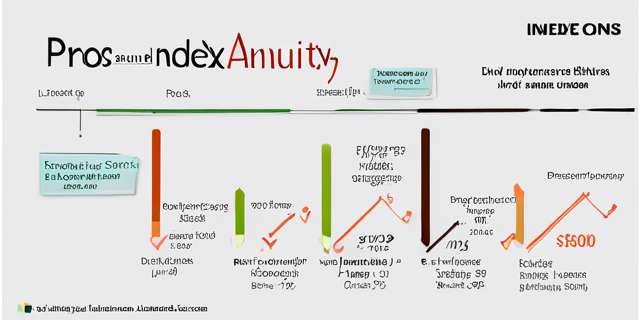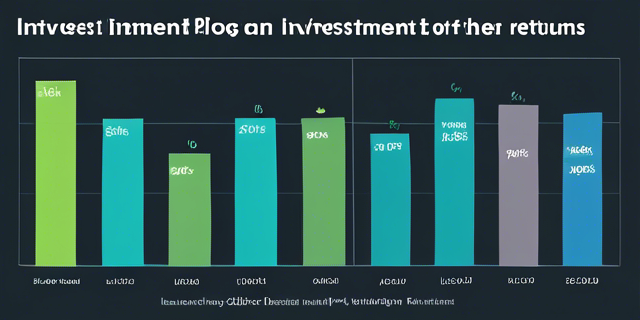Demystifying Annuity Fees and Charges 2024: A Comprehensive Guide

Annuities have become increasingly popular as a way to secure a steady stream of income during retirement. However, many people are often caught off guard by the various fees and charges associated with these financial products. Understanding these costs is crucial, as they can significantly impact the overall performance and returns of your annuity investment.
In this comprehensive guide, we’ll dive deep into the world of annuity fees and charges, helping you navigate the complexities and make informed decisions about your retirement planning.
Why Understand Annuity Fees and Charges?
Before we delve into the specifics, it’s essential to understand why annuity fees and charges are so important. These costs can have a substantial impact on your long-term returns, and failing to account for them can lead to unexpected financial consequences.
Imagine you’re building a retirement nest egg, and every penny counts. Annuity fees and charges act like tiny leaks in your investment bucket, slowly draining away your hard-earned savings. By understanding these costs, you can make informed decisions and potentially adjust your investment strategy to maximize your returns.
Common Annuity Fees and Charges
Annuities come with a variety of fees and charges, each serving a different purpose. Let’s break them down:
1. Mortality and Expense Risk (M&E) Charge
This fee is charged by the insurance company to cover the risk associated with providing guaranteed income payments for life. It’s typically deducted from your annuity’s account value on an annual basis, and the charge can range from 0.5% to 1.5% or more.
2. Administrative Fees
These fees cover the insurance company’s costs for maintaining your annuity contract, processing transactions, and providing customer service. Administrative fees can be flat annual fees or a percentage of your account value, ranging from $30 to $60 or more per year.
3. Investment Management Fees
If you’ve chosen a variable annuity, your funds are invested in underlying subaccounts or portfolios. Investment management fees are charged by the investment managers to cover the costs of managing these portfolios. These fees can range from 0.5% to 2% or more, depending on the investment options you’ve selected.
4. Rider Fees
Annuities often offer optional riders or additional features, such as guaranteed minimum income benefits or long-term care coverage. These riders come with additional fees, which can vary widely depending on the rider and the insurance company.
5. Surrender Charges
If you decide to withdraw your money from the annuity within a certain period, typically during the early years of your contract, you may be subject to surrender charges. These charges are designed to discourage early withdrawals and can range from a few percentage points to as high as 10% or more, depending on your contract.
Understanding the Impact of Fees and Charges

Now that you’re familiar with the different types of fees and charges, let’s explore how they can impact your annuity investment over time.
Imagine you have a $100,000 investment in a variable annuity with an average annual return of 7%. If the annuity charges a 1.5% M&E fee, a 0.5% administrative fee, and a 1% investment management fee, your total annual fees would be 3%. Over a 20-year period, these fees could potentially reduce your account value by nearly $50,000!
This example highlights the importance of carefully evaluating and comparing the fees and charges associated with different annuity products. Even seemingly small differences in fees can have a significant impact on your long-term returns.
Strategies for Minimizing Annuity Fees and Charges
While fees and charges are an unavoidable part of annuity investments, there are strategies you can employ to minimize their impact:
1. Shop Around and Compare
Don’t settle for the first annuity product you come across. Shop around and compare the fees and charges offered by different insurance companies. Some companies may offer lower fees or provide fee waivers for larger investment amounts.
2. Consider Fixed Annuities
Fixed annuities generally have lower fees than variable annuities, as there are no underlying investment portfolios to manage. If you’re seeking a more predictable and less expensive option, a fixed annuity could be a suitable choice.
3. Negotiate Fees
Don’t be afraid to negotiate with insurance companies, especially if you’re investing a larger sum of money. Some companies may be willing to lower their fees or waive certain charges to secure your business.
4. Opt for Low-Cost Investment Options
If you’ve chosen a variable annuity, consider low-cost investment options, such as index funds or exchange-traded funds (ETFs). These options typically have lower investment management fees compared to actively managed funds.
5. Understand Surrender Charges
Carefully review the surrender charge schedule for your annuity contract. If you plan to hold the annuity for an extended period, the impact of surrender charges may be minimal. However, if you anticipate needing access to your funds sooner, opt for a contract with lower or no surrender charges.
Tax Implications of Annuity Fees and Charges
It’s important to note that the tax treatment of annuity fees and charges can vary depending on the type of annuity you own. Here’s a brief overview:
- Qualified Annuities: For annuities held in tax-deferred accounts like IRAs or 401(k)s, the fees and charges are generally not tax-deductible since the contributions were made with pre-tax dollars.
- Non-Qualified Annuities: For annuities purchased with after-tax dollars, some fees and charges may be partially tax-deductible. However, the rules can be complex, and it’s advisable to consult with a tax professional to understand the implications for your specific situation.
Seeking Professional Advice
Navigating the world of annuity fees and charges can be complex, and it’s often beneficial to seek the guidance of a qualified financial advisor. An experienced advisor can help you:
- Understand the Fees: A financial advisor can break down the various fees and charges associated with different annuity products, ensuring you have a clear understanding of the costs involved.
- Evaluate Your Options: An advisor can help you evaluate different annuity options and identify products that align with your financial goals while minimizing unnecessary fees and charges.
- Develop a Comprehensive Plan: A financial advisor can assist in developing a comprehensive retirement plan that incorporates annuities as part of a well-diversified investment portfolio.
- Stay Up-to-Date: As regulations and industry practices evolve, an advisor can keep you informed of any changes that may impact your annuity investments and associated fees and charges.
While seeking professional advice may come with additional costs, the potential long-term benefits of making informed decisions and minimizing unnecessary fees can make it a worthwhile investment.
Conclusion
Annuities can be valuable tools for securing a steady income stream during retirement, but understanding the associated fees and charges is crucial. By being aware of the different types of fees, their potential impact, and strategies for minimizing them, you can make more informed decisions and potentially maximize the returns on your annuity investment.
Remember, annuity fees and charges are not one-size-fits-all. Take the time to carefully evaluate your options, compare products from different insurance companies, and seek professional advice when needed. Your retirement deserves careful planning, and by staying informed and proactive, you can ensure that your hard-earned savings are working as efficiently as possible for your future financial security.
Frequently Asked Questions (FAQs)
1. Are annuity fees and charges tax-deductible?
The tax treatment of annuity fees and charges depends on the type of annuity you own. For qualified annuities held in tax-deferred accounts, the fees and charges are generally not tax-deductible. However, for non-qualified annuities purchased with after-tax dollars, some fees and charges may be partially tax-deductible. It’s advisable to consult with a tax professional to understand the specific implications for your situation.
2. Can I negotiate annuity fees and charges with insurance companies?
Yes, in some cases, you may be able to negotiate annuity fees and charges with insurance companies, especially if you’re investing a larger sum of money. Don’t be afraid to shop around and negotiate for better terms or fee waivers. Insurance companies may be willing to offer more favorable conditions to secure your business.
3. How do surrender charges work, and how can I minimize their impact?
Surrender charges are fees imposed by insurance companies if you withdraw funds from your annuity within a certain period, typically during the early years of your contract. These charges can range from a few percentage points to as high as 10% or more, depending on your contract. To minimize the impact of surrender charges, carefully review the surrender charge schedule and consider holding the annuity for an extended period if possible. Alternatively, you can opt for an annuity with lower or no surrender charges if you anticipate needing access to your funds sooner.
4. Are there any fee-free annuity options available?
While fee-free annuities are rare, some insurance companies may offer products with minimal or no explicit fees. However, it’s important to note that these companies may still recover their costs through other means, such as lower credited interest rates or less favorable payout rates. As with any annuity product, it’s crucial to carefully evaluate the terms and conditions to fully understand the associated costs and potential trade-offs.
5. How do investment management fees for variable annuities work?
Investment management fees are charged by the investment managers who oversee the underlying subaccounts or portfolios in which your variable annuity funds are invested. These fees cover the costs of managing the portfolios and can range from 0.5% to 2% or more, depending on the investment options you’ve selected. It’s important to consider these fees when evaluating variable annuity products, as they can have a significant impact on your long-term returns.








